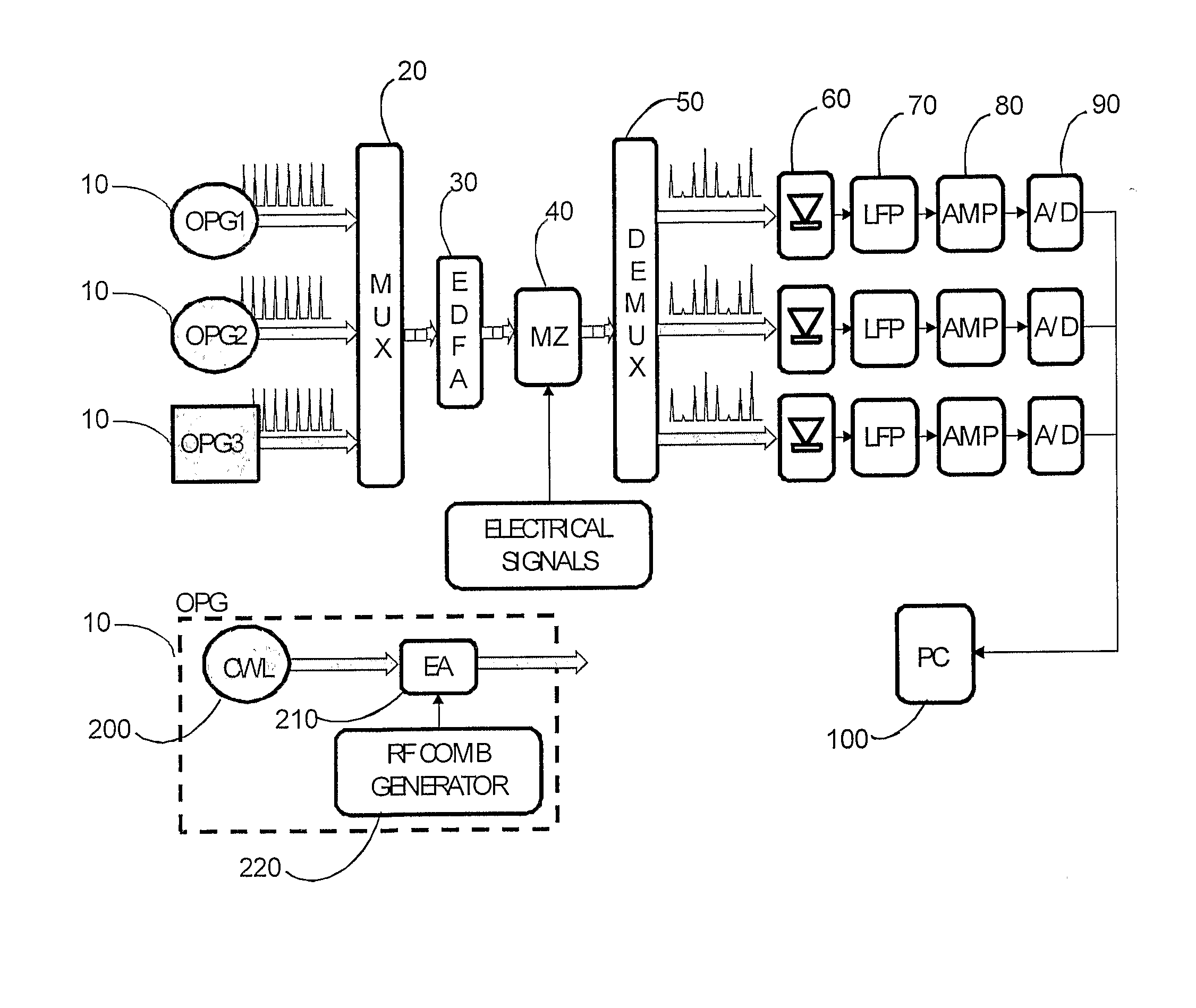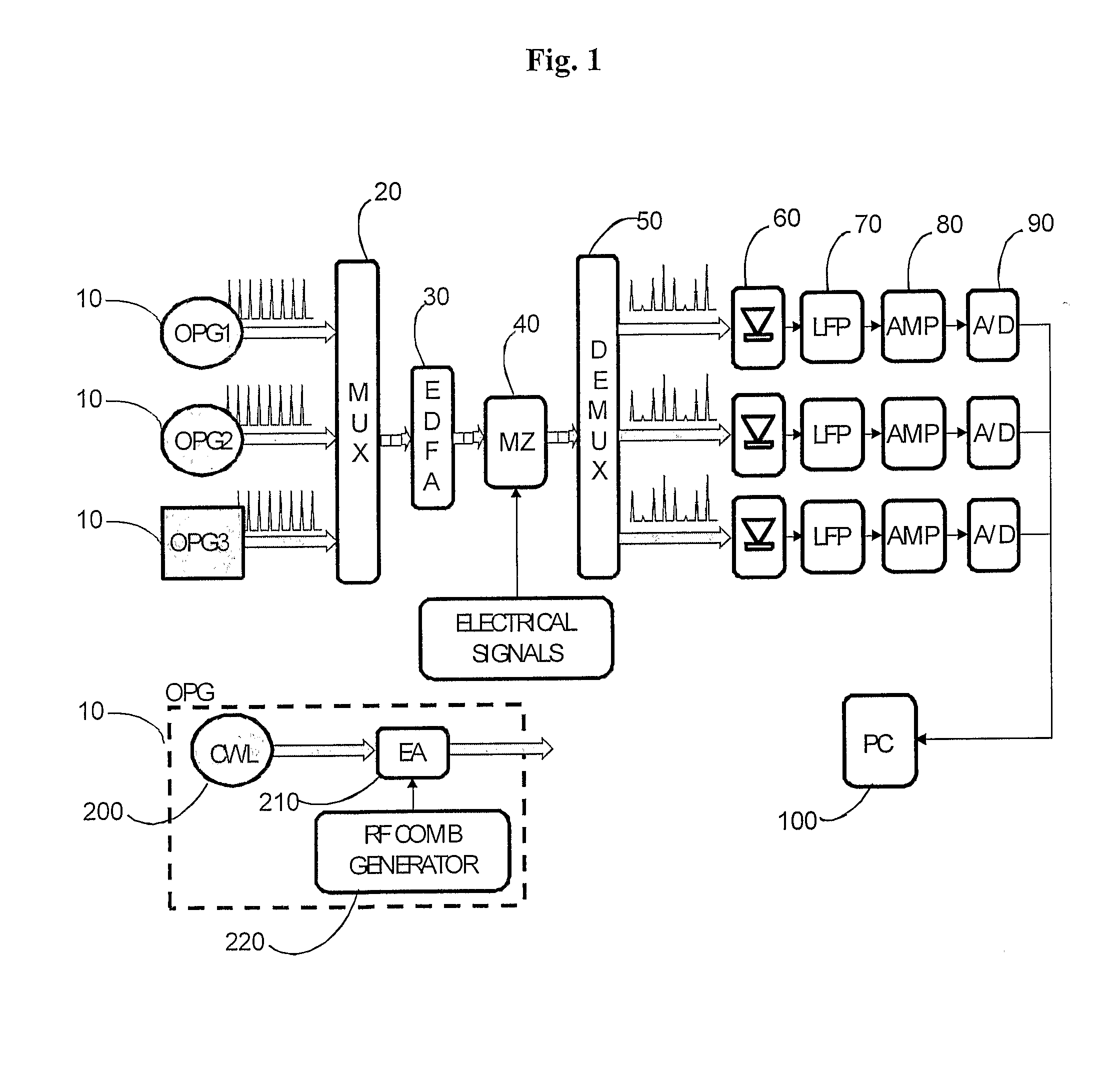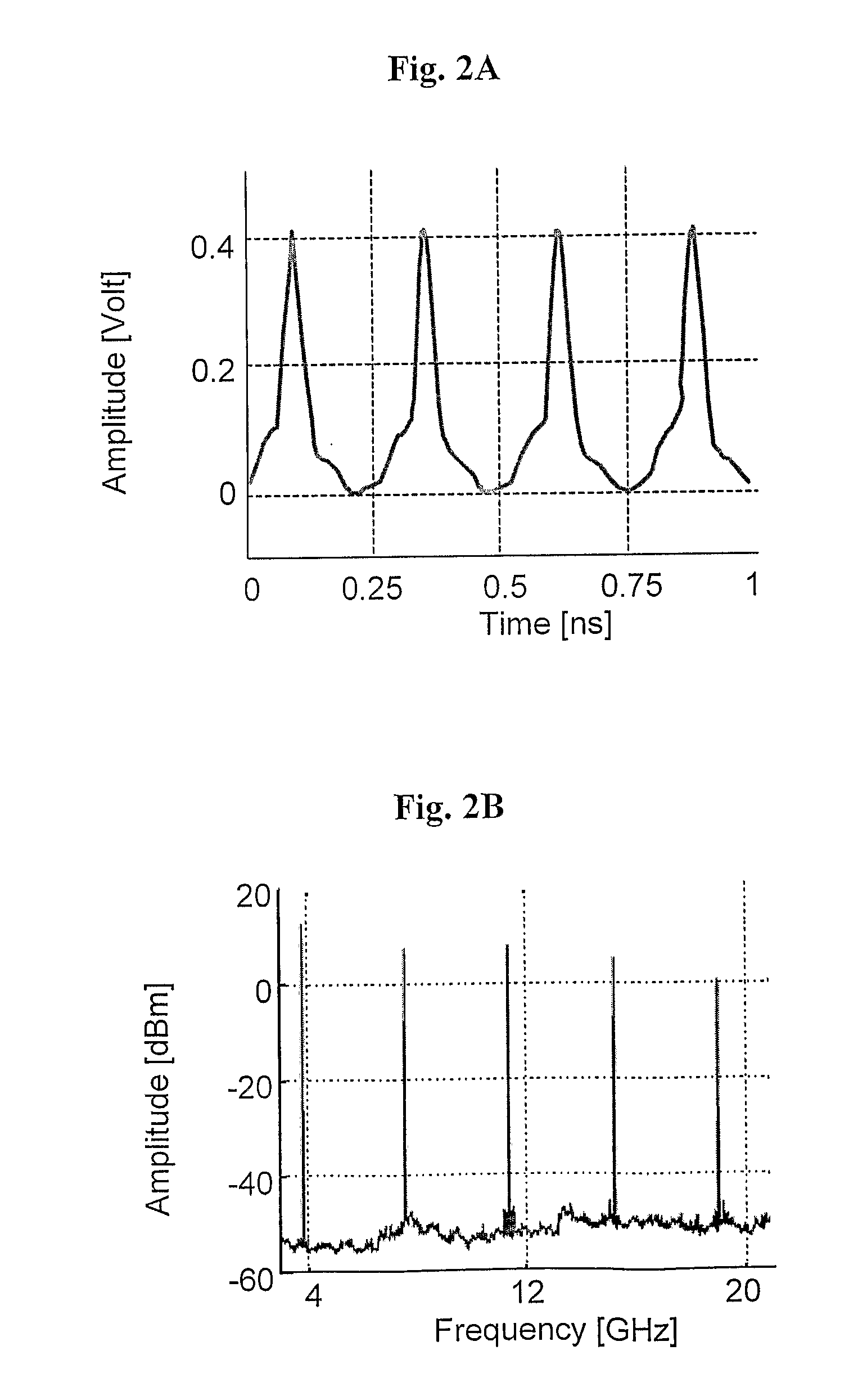Optical Under-Sampling And Reconstruction Of Sparse Multiband Signals
a multiband signal and optical under-sampling technology, applied in the field of reconstructed signals from samples, can solve the problems of inability to sample, cost effectiveness, and signal reconstruction, and achieve the effects of increasing the sampled snr, effective reconstructed signals, and increasing the sample ra
- Summary
- Abstract
- Description
- Claims
- Application Information
AI Technical Summary
Benefits of technology
Problems solved by technology
Method used
Image
Examples
Embodiment Construction
[0077]In the following detailed description of various embodiments, reference is made to the accompanying drawings that form a part thereof, and in which are shown by way of illustration specific embodiments in which the invention may be practiced. It is understood that other embodiments may be utilized and structural changes may be made without departing from the scope of the present invention.
[0078]The description is divided into three sections: Section 1 describes an embodiment of a hardware system for reconstructing sparse multiband signals; Section 2 describes multirate asynchronous sampling of sparse multiband signals; and Section 3 describes multirate synchronous sampling of sparse multiband signals.
Section 1—Hardware System for Reconstructing Sparse Multiband Signals
[0079]Sections 2 and 3 below demonstrate theoretically a different theoretical scheme for reconstructing sparse multiband signals which we call multi-rate sampling (MRS). The scheme entails gathering samples at P...
PUM
 Login to View More
Login to View More Abstract
Description
Claims
Application Information
 Login to View More
Login to View More - R&D
- Intellectual Property
- Life Sciences
- Materials
- Tech Scout
- Unparalleled Data Quality
- Higher Quality Content
- 60% Fewer Hallucinations
Browse by: Latest US Patents, China's latest patents, Technical Efficacy Thesaurus, Application Domain, Technology Topic, Popular Technical Reports.
© 2025 PatSnap. All rights reserved.Legal|Privacy policy|Modern Slavery Act Transparency Statement|Sitemap|About US| Contact US: help@patsnap.com



